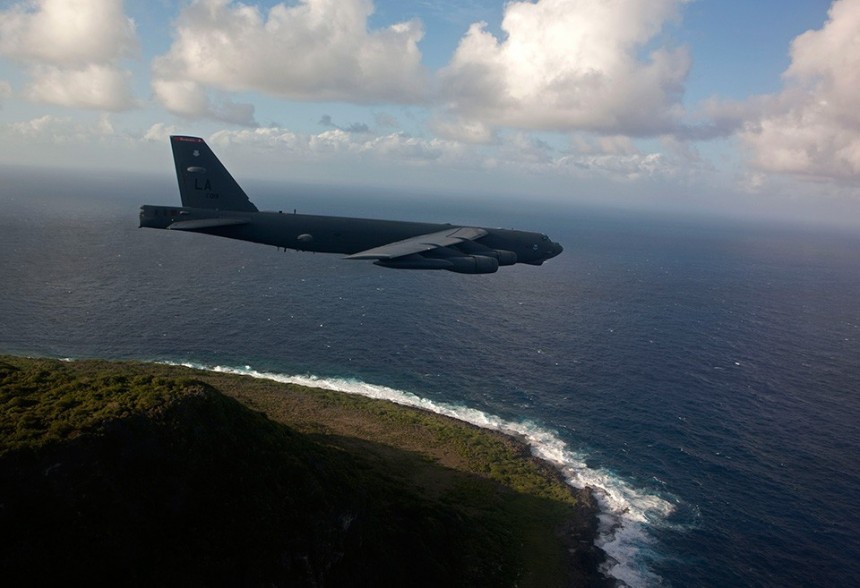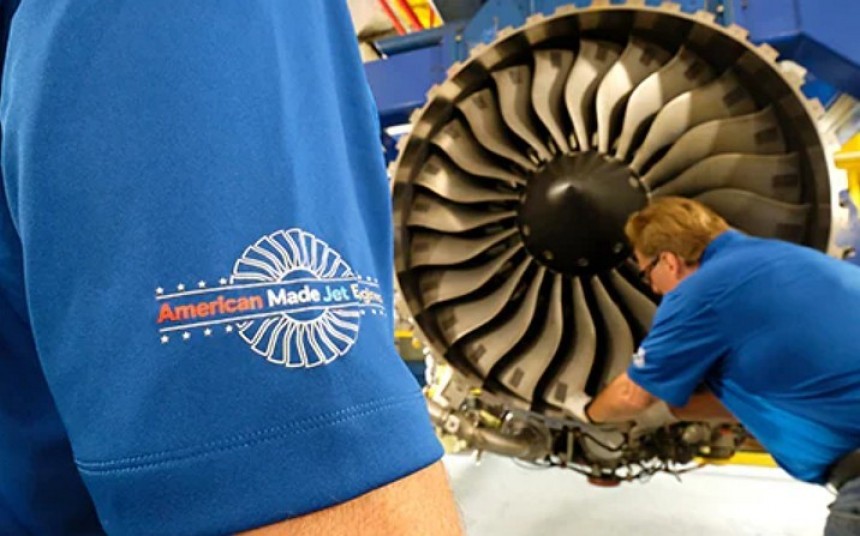The Department of the U.S. Air Force announced on Friday, September 24th, that it had awarded a $2.6 billion contract to Rolls-Royce to provide jet engines for the B-52 bomber fleet under the Commercial Engine Replacement Program (CERP). The decision implies that the B-52 will be powered by the American-made Rolls-Royce F-130 engine for the next three decades.
The B-52 Stratofortress is a massive jet-powered strategic bomber designed to perform strategic attacks, air interdiction, close air support, and maritime mining. The aircraft weighs around 185,000 pounds (over 83 metric tons) empty. And if you think that's pretty impressive, the behemoth can actually reach 265,000 pounds (120 metric tons) when loaded with bombs.
The bomber can reach altitudes of up to 50,000 feet (15,240 meters) and is capable of deploying nuclear weapons with precise navigation capabilities, having a combat range of more than 8,800 miles (14,080 km).
Made by Boeing, the B-52s have been in service with the USAF since the 1950s, with more than 700 of them being fielded since their production began. In 1996, Rolls-Royce and Boeing proposed equipping each bomber with four leased Rolls-Royce RB211-535 engines in order to cut down costs, reduce greenhouse gas emissions, and enhance aircraft range and endurance. However, due to funding issues, the re-engining was delayed.
It took years for the program to finally progress. The Air Force announced the B-52H CERP in early 2018, and in April 2020, it released a request for proposals for 608 commercial engines to upgrade its 76-aircraft B-52 fleet. The program has seen competitors such as General Electric propose its CF34-10 and Passport turbofans, Pratt and Whitney offer its PW800, and Rolls Royce, the modern F130.
Now, the program has reached another significant milestone, as the USAF selected Rolls-Royce to replace the old engines on its bomber fleet with the new F130. This decision is not surprising given Rolls-Royce's long and proven record of supplying the power to protect the U.S. military, having provided hundreds of engines to the USAF over the past decades.
A model of the Rolls-Royce engine used to power the iconic B-52 is already in service with the USAF, powering both the C-37 and E-11 BACN aircraft. So far, the new F130 and its commercial family of engines have accumulated more than 27 million engine flight hours.
It's a reliable engine with high mission readiness and low maintenance requirements. Once deployed, the F130 is capable of staying on the wing for the duration of the B-52's intended lifespan. Furthermore, it will offer increased fuel efficiency, extended range, and minimized tanker aircraft requirements.
Rolls-Royce plans to produce and test the F130 engines at its plant in Indianapolis, Indiana. This follows the recent completion of a $600 million investment to breathe life into the advanced manufacturing campus, providing some of the most technologically advanced manufacturing facilities.
The F130 will replace the old Pratt & Whitney TF33-PW-103 turbofan, which has powered the B-52 since the 1960s and is expected to be no longer functional by 2030. Boeing, the B-52's original equipment manufacturer, will be in charge of integrating the engines into the aircraft.
Although the CERP is mainly focusing on engine replacement, the program is also looking to update the flight deck area, struts, and nacelles of the bomber fleet. With these modifications, the Air Force expects its B-52s to continue supporting its missions into the 2050s.
By the end of 2025, the first two completely upgraded B-52s are expected to perform ground and flight testing. The USAF expects the first lot of operational B-52s outfitted with the new engines to be delivered by the end of 2028, with the whole fleet upgraded by 2035.
The bomber can reach altitudes of up to 50,000 feet (15,240 meters) and is capable of deploying nuclear weapons with precise navigation capabilities, having a combat range of more than 8,800 miles (14,080 km).
Made by Boeing, the B-52s have been in service with the USAF since the 1950s, with more than 700 of them being fielded since their production began. In 1996, Rolls-Royce and Boeing proposed equipping each bomber with four leased Rolls-Royce RB211-535 engines in order to cut down costs, reduce greenhouse gas emissions, and enhance aircraft range and endurance. However, due to funding issues, the re-engining was delayed.
It took years for the program to finally progress. The Air Force announced the B-52H CERP in early 2018, and in April 2020, it released a request for proposals for 608 commercial engines to upgrade its 76-aircraft B-52 fleet. The program has seen competitors such as General Electric propose its CF34-10 and Passport turbofans, Pratt and Whitney offer its PW800, and Rolls Royce, the modern F130.
Now, the program has reached another significant milestone, as the USAF selected Rolls-Royce to replace the old engines on its bomber fleet with the new F130. This decision is not surprising given Rolls-Royce's long and proven record of supplying the power to protect the U.S. military, having provided hundreds of engines to the USAF over the past decades.
It's a reliable engine with high mission readiness and low maintenance requirements. Once deployed, the F130 is capable of staying on the wing for the duration of the B-52's intended lifespan. Furthermore, it will offer increased fuel efficiency, extended range, and minimized tanker aircraft requirements.
The F130 will replace the old Pratt & Whitney TF33-PW-103 turbofan, which has powered the B-52 since the 1960s and is expected to be no longer functional by 2030. Boeing, the B-52's original equipment manufacturer, will be in charge of integrating the engines into the aircraft.
Although the CERP is mainly focusing on engine replacement, the program is also looking to update the flight deck area, struts, and nacelles of the bomber fleet. With these modifications, the Air Force expects its B-52s to continue supporting its missions into the 2050s.
By the end of 2025, the first two completely upgraded B-52s are expected to perform ground and flight testing. The USAF expects the first lot of operational B-52s outfitted with the new engines to be delivered by the end of 2028, with the whole fleet upgraded by 2035.








